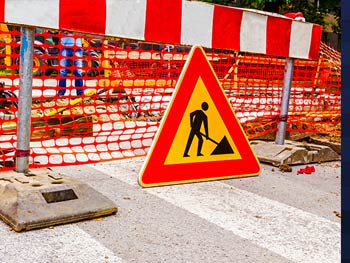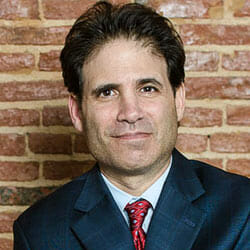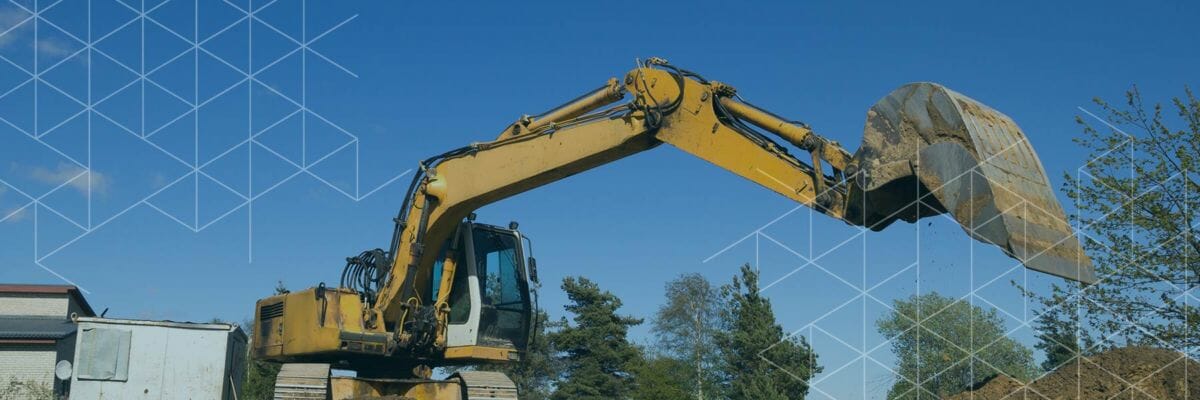 Excavation and trenching jobs that go wrong can cause serious injury, even death. Cave-ins are by far the most common type of excavation or trenching accident, accounting for 38 percent of all such mishaps. The data from the U.S. Bureau of Labor Statistics (BLS) show that, between 2000 and 2006, 271 workers died in cave-ins. Between 1992 and 2000, that figure was 488 deaths. That’s an average of over four deaths per month during that period.
Excavation and trenching jobs that go wrong can cause serious injury, even death. Cave-ins are by far the most common type of excavation or trenching accident, accounting for 38 percent of all such mishaps. The data from the U.S. Bureau of Labor Statistics (BLS) show that, between 2000 and 2006, 271 workers died in cave-ins. Between 1992 and 2000, that figure was 488 deaths. That’s an average of over four deaths per month during that period.
BLS statistics also show that, in 2004, construction workers were 7.7 percent of the workforce but suffered 22.2 percent of the nation’s work-related deaths. Not only that, but the percentage of days of missed work for nonfatal injury and illness was 71 percent higher than for all occupations as a whole.
Suffocation or crushing injuries are the most common cause of cave-in fatalities, which is not surprising, considering that one cubic yard of soil weighs around 3,000 pounds — about the weight of your pickup truck or SUV. Of survivable injuries, the most common injuries are bone fractures.
What Can Go Wrong?
Most trenching deaths are preventable, according to OSHA, such as the one in Boonton, NJ, where two of four men died in a pipe trenching job. (A third was injured but survived, and a fourth was uninjured.)
Deaths need not be nearly immediate, nor are they caused only from suffocation at the scene. Right here in Maryland in November 2014, a man died after a Frederick County trench caved in, though he was alive and conscious after being pulled out. He was buried from the waist down for several hours and, after being freed, he complained of pain. He was then taken to a shock trauma unit, where he later died.
Asphyxiation from fumes and noxious gases can also occur in trenches. In a six-foot-deep trench, a worker was applying a waterproofing primer to the foundation of a house when he was overcome by fumes. He later died from trichloroethane overexposure. No worker had been given respiratory protection, the air quality in the trench was not tested, and no ventilation was provided.
The common themes tend to be inadequate protective measures, lack of adequate inspection by a competent person, little to no training, a failure to follow safety procedures such as not allowing workers inside an area with active excavation, and a lack of emergency escape provisions.
Preventing Cave-ins
Most excavation and trenching injuries and fatalities can be prevented by following OSHA standards and just plain using common sense. For example, protective systems should be put in place to adequately prevent cave-ins and thereby prevent injury and death to workers. The varieties of protective systems are:
- Benching, which means digging the sides of an excavation to form step-like horizontal levels. Benching cannot be done in soil that is watery, sandy, or otherwise difficult to stabilize (Type C soil). (https://www.osha.gov/pls/oshaweb/owadisp.show_document?p_table=STANDARDS&p_id=10931 )
- Sloping, which requires angling the trench wall so that it slopes away from the bottom of the excavated area.
- Shoring, which involves the installation of wall supports, made with posts and beams or planking and hydraulic jacks.
- Shielding, which means the use of trench boxes.
Many factors must be taken into account when designing a protective system, such as the type of soil being entrenched, the depth of the trench, the soil’s water content, and sudden changes in the weather. Trenches deeper than 20 feet require even more competent assessment, the proper protective systems, appropriate training, and rigorous, regular inspection.
How You Can Protect Yourself
All trench walls will eventually collapse; it’s simply a matter of time. OSHA requires that protective systems be in place for all trenches five feet and deeper. Thirty-seven percent of all accidents occur in trenches which are less than five feet deep, so even a shallow trench can be hazardous. However, most fatalities happen in trenches that are five to fourteen feet deep.
If you are asked to enter or work in a trench without an adequate protective system in place, regardless of depth, or without an exit ladder or ramp, if you possibly can, refuse to do so. An unprotected trench is extremely dangerous.
Do not let a casual attitude about the risks involved lead you to believe that the risk is small.
How Much Is Safety Worth?
Those who own a company that does excavation or trenching work will pay a price for engaging in unsafe practices. Fines can run from $40,000 to $147,000, or even to a whopping $700,000 fine. Often precautions that would take a short time to implement, even mere minutes, can result in stiff fines, not to mention injuries and fatalities.
Of course, the human cost borne by the workers is the biggest cost of all.
Do You Think You Have a Case?
Cave-in and construction accident cases can be complex, with numerous parties and issues. If you’ve been injured in a construction accident in Baltimore, seeking guidance from a knowledgeable Baltimore construction accident lawyer can be crucial. Contact us for more information on whether your case could yield compensation above and beyond workers’ comp. Steven Heisler, a dedicated work injury lawyer in Maryland with 25 years of experience, has been helping injured people and their families pursue compensation from the negligent people and companies who caused them to be injured. He genuinely cares about every single one of his clients. Contact us today for a free consultation – there’s no obligation and your information is completely confidential. Call (410) 625-4878 to get in touch with The Injury Lawyer.

Attorney Steve Heisler
Steve Heisler decided in 1996 that he was going to focus his law practice exclusively on injury cases. Since then, he has been representing injured people against insurance companies, disreputable medical practitioners and Big Pharma, and doing it with compassion, honesty and level-headed rationality. [ Attorney Bio ]

